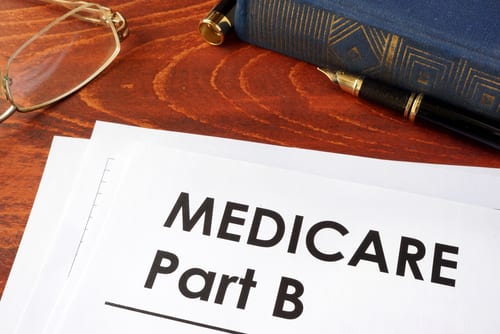Medicare Part B is part of the foundation of Original Medicare. How does it work?
What Does Part B Cover?
Part B is outpatient medical insurance from Medicare. It covers preventive and medically necessary services, including services from doctors, mental health care, clinical research, ambulance services, durable medical equipment (such as wheelchairs), and preventive screenings and shots.
To find out if the service, test, or item you need will be covered by Medicare, you can speak with your physician.
What Are The Costs Of Part B?
Everyone pays premiums for Part B. The standard premium is $148.50 in 2021, for those claiming less than $88,000 in income as an individual or less than $176,000 filing jointly as a couple. If you make more than $88,000 (or $176,000 jointly), you will be charged an Income Related Monthly Adjusted Amount (IRMAA), making your monthly premiums slightly higher for each income bracket.
Part B has a serious late-enrollment penalty, which lasts for as long as you hold Part B coverage. It adds up to 10 percent to your monthly premium for each twelve-month period you went without signing up for Part B after you became eligible.
For standard healthcare visits, you will be asked to pay copayments. You might be asked to pay around $20 for doctor visits and $50 for emergency room visits. After you meet your deductible of $203 in 2021, you will be responsible for up to 20 percent of the Medicare-approved amount for covered services as coinsurance. This is due to cost-sharing, and you are effectively paying for a portion of your healthcare while Medicare pays the remaining 80 percent. Even if the doctor charges an alarming amount on your claim, Medicare has approved amounts they are willing to pay for covered services, of which you are only paying one-fifth. Thus, you are protected from large charges.
Who Is Eligible for Part B?
All people who qualify for premium-free Part A are eligible to enroll in Part B. These are people who:
- Are 65 or older and a U.S. citizen or permanent legal resident of at least five years in a row
- Are already receiving disability benefits
- Are already receiving retirement benefits
- Have End-Stage Renal Disease (ESRD)
- Have amyotrophic lateral sclerosis (ALS)
To otherwise qualify for Part B, you must be 65 or older and be a U.S. citizen or have been a permanent resident lawfully living in the U.S. for at least five years.

